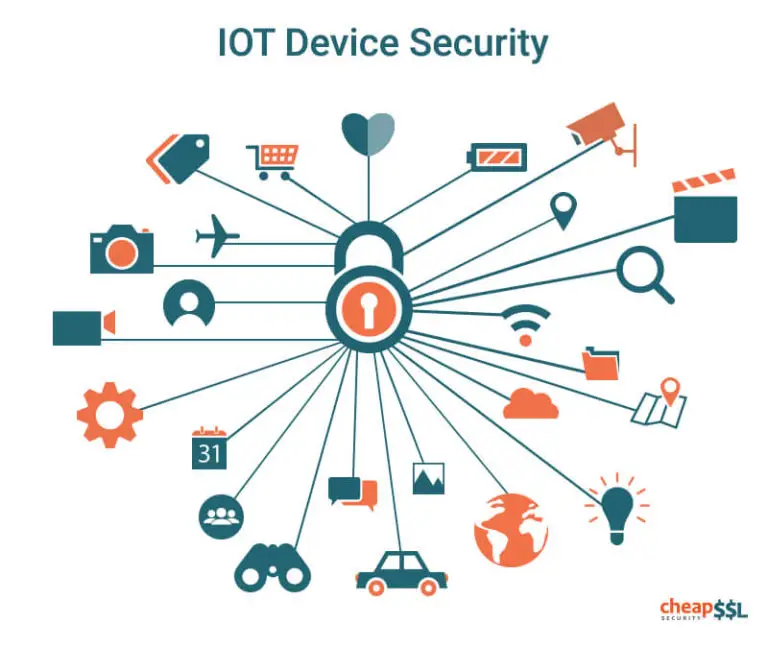Role of CDNs in Securing and Accelerating IoT Devices

Security:

- Edge Caching: CDNs store IoT data closer to the edge devices, reducing the latency of accessing content and improving security.
- Content Delivery Network Firewall (CDNFW): CDNs can integrate with firewalls to block malicious traffic at the edge, preventing DDoS attacks and data breaches.
- SSL Encryption: CDNs provide secure encryption (TLS/SSL) to protect IoT data in transit, ensuring data confidentiality and integrity.
- DDoS Mitigation: CDNs have distributed architecture and can quickly detect and mitigate DDoS attacks without affecting the performance of legitimate traffic.
Acceleration:

- High Scalability: CDNs have massive global networks with multiple points of presence (PoPs), allowing IoT devices to access content from the nearest location and reducing latency.
- Edge Computing: CDNs offer edge computing capabilities, enabling IoT data to be processed at the edge rather than in the cloud, minimizing latency and improving performance.
- Protocol Optimization: CDNs optimize protocols such as HTTP/3, QUIC, and WebSockets to accelerate data delivery to IoT devices.
- Adaptive Bitrate Streaming: CDNs deliver IoT video content in various bitrates, allowing devices with limited bandwidth to adapt to the best quality possible.
Specific Benefits for IoT Devices:
- Reduced Latency: By caching IoT data close to edge devices, CDNs minimize latency, making real-time responses and remote control possible.
- Improved Reliability: CDNs’ distributed architecture ensures high availability and reliability, even during network outages or traffic spikes.
- Reduced Costs: CDNs offer pay-as-you-go pricing models, allowing IoT device manufacturers to optimize their bandwidth usage and reduce infrastructure costs.
- Enhanced Security Posture: CDNs provide advanced security features that strengthen the protection of IoT devices against threats.
- Simplified Management: CDNs offer centralized management platforms, making it easy to monitor and control IoT devices remotely.
Conclusion:
CDNs play a crucial role in securing and accelerating IoT devices. By leveraging their security features and performance optimization capabilities, CDNs enable IoT devices to operate securely and efficiently in a connected world.## The Role of CDNs in Securing and Accelerating IoT Devices
Executive Summary
IoT devices are becoming increasingly prevalent in our homes and businesses, but they also present a number of security and performance challenges. Content Delivery Networks (CDNs) can help to address these challenges by providing a secure and reliable platform for delivering content to IoT devices.
Introduction
IoT devices are connected to the internet and can collect and share data. This data can be used to improve the efficiency of our homes and businesses, but it can also be used to track our movements and activities. This raises a number of security concerns, as well as performance challenges.
CDNs can help to address these concerns by providing a secure and reliable platform for delivering content to IoT devices. CDNs can also help to improve the performance of IoT devices by reducing latency and improving bandwidth.
FAQ
What is a CDN?
A CDN is a network of servers that are distributed around the world. CDNs help to improve the performance of websites and applications by delivering content from the server that is closest to the user.
How can CDNs help to secure IoT devices?
CDNs can help to secure IoT devices by providing a number of security features, such as:
- Encryption: CDNs can encrypt data in transit and at rest, which helps to protect it from unauthorized access.
- Authentication: CDNs can authenticate users and devices, which helps to prevent unauthorized access to data.
- Access control: CDNs can control access to data based on user roles and permissions.
How can CDNs help to accelerate IoT devices?
CDNs can help to accelerate IoT devices by reducing latency and improving bandwidth. Latency is the time it takes for data to travel from one point to another. Bandwidth is the amount of data that can be transmitted over a network in a given amount of time. CDNs can reduce latency by delivering content from the server that is closest to the user. CDNs can improve bandwidth by using a variety of techniques, such as:
- Caching: CDNs can cache content on their servers, which reduces the amount of time it takes to deliver content to users.
- Load balancing: CDNs can distribute traffic across their network, which helps to improve performance and reliability.
- Content optimization: CDNs can optimize content for delivery over the internet, which helps to improve performance and reduce bandwidth usage.
Subtopics
Security
Security is a top priority for IoT devices, as they can be used to collect and share sensitive data. CDNs can help to secure IoT devices by providing a number of security features, such as encryption, authentication, and access control.
- Encryption: CDNs can encrypt data in transit and at rest, which helps to protect it from unauthorized access.
- Authentication: CDNs can authenticate users and devices, which helps to prevent unauthorized access to data.
- Access control: CDNs can control access to data based on user roles and permissions.
- DDoS protection: CDNs can protect IoT devices from DDoS attacks, which can disrupt their operation.
- Web application firewall: CDNs can protect IoT devices from web application attacks, such as SQL injection and cross-site scripting.
Performance
Performance is also a critical factor for IoT devices, as they need to be able to collect and share data in real time. CDNs can help to improve the performance of IoT devices by reducing latency and improving bandwidth.
- Latency: CDNs can reduce latency by delivering content from the server that is closest to the user.
- Bandwidth: CDNs can improve bandwidth by using a variety of techniques, such as caching, load balancing, and content optimization.
- Content optimization: CDNs can optimize content for delivery over the internet, which helps to improve performance and reduce bandwidth usage.
- Edge computing: CDNs can provide edge computing services, which can help to improve the performance of IoT devices by reducing latency and improving bandwidth.
- Network optimization: CDNs can optimize their networks for the delivery of IoT traffic, which can help to improve performance and reliability.
Scalability
Scalability is another important consideration for IoT devices, as they can be deployed in large numbers. CDNs can help to scale IoT deployments by providing a scalable platform for delivering content.
- Horizontal scaling: CDNs can scale horizontally by adding more servers to their network.
- Vertical scaling: CDNs can scale vertically by increasing the capacity of their existing servers.
- Auto-scaling: CDNs can auto-scale their resources to meet the demand of IoT traffic.
- Geographic distribution: CDNs have a global presence, which helps to ensure that IoT devices can access content from anywhere in the world.
- Load balancing: CDNs can distribute traffic across their network, which helps to improve performance and reliability.
Reliability
Reliability is essential for IoT devices, as they need to be able to operate continuously. CDNs can help to improve the reliability of IoT deployments by providing a number of redundancy and fault tolerance features.
- Redundancy: CDNs have multiple servers in each location, which helps to ensure that content is always available.
- Fault tolerance: CDNs can tolerate the failure of individual servers without affecting the delivery of content.
- Monitoring: CDNs monitor their networks and servers 24/7, which helps to ensure that any problems are detected and resolved quickly.
- Backup: CDNs can provide backup services, which can help to protect IoT data in the event of a disaster.
- Disaster recovery: CDNs can help to recover from disasters, such as earthquakes and hurricanes, by providing backup
